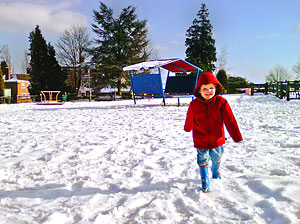Preparing for Winter Photography
by Amy
Ah yes! Winter is about to return, and this means that photographers will be facing a few seasonal challenges. There is the obvious problem of a world dressed in varying shades of white, and what that means for a camera’s sensor. There is also the actual weather, with the cold and damp conditions having effects on lenses, batteries, and even the photographer’s hands. When thinking about winter, the first consideration must be acclimation. When you step indoors after snapping some images of brilliant red cardinals perched on a porch railing, you will notice that the glass on the lens is going to fog up immediately. This applies in both directions – when first entering the cold and when returning indoors – and it means that if a photographer is going to be outdoors for any length of time they should stop to consider if condensation will occur once they are back inside. If so, it is a good idea to leave the camera bag by the door, and place the equipment in it as soon as you re-enter. This will keep the shifting of temperatures to a much less extreme degree and prevent wear and tear. The next thing to remember is that winter weather translates to cold conditions. The cold will instantly reduce the life of any batteries. While tucking a few charged batteries into the camera bag is a smart call, if you are actually going to be working in the cold for any length of time, the spare batteries should be put in an inside pocket where body heat will help them to retain their active charge. Most outdoor photographers will also make a point of rotating their batteries from their pocket to the camera every twenty to thirty minutes in colder weather. Winter comes with precipitation, winds and cold, and this can often allow for snow to strike and enter the camera. This is an absolute killer and must be avoided. Most professionals bring along a small towel to immediately wipe a camera body that has been hit by snow or rain, and others actually purchase a rain hood that prevents any precipitation from bothering the camera at all. Lastly, one of the primary tools for winter photography will be the photographer’s hands. It is a good idea to purchase special mittens or gloves that allow the photographer to easily manipulate their gear without exposing their fingers to the wind, cold, and icy conditions that often prevail during the winter months. Amy.
|
Join in and write your own page! It's easy to do. How? Simply click here to return to Articles.


